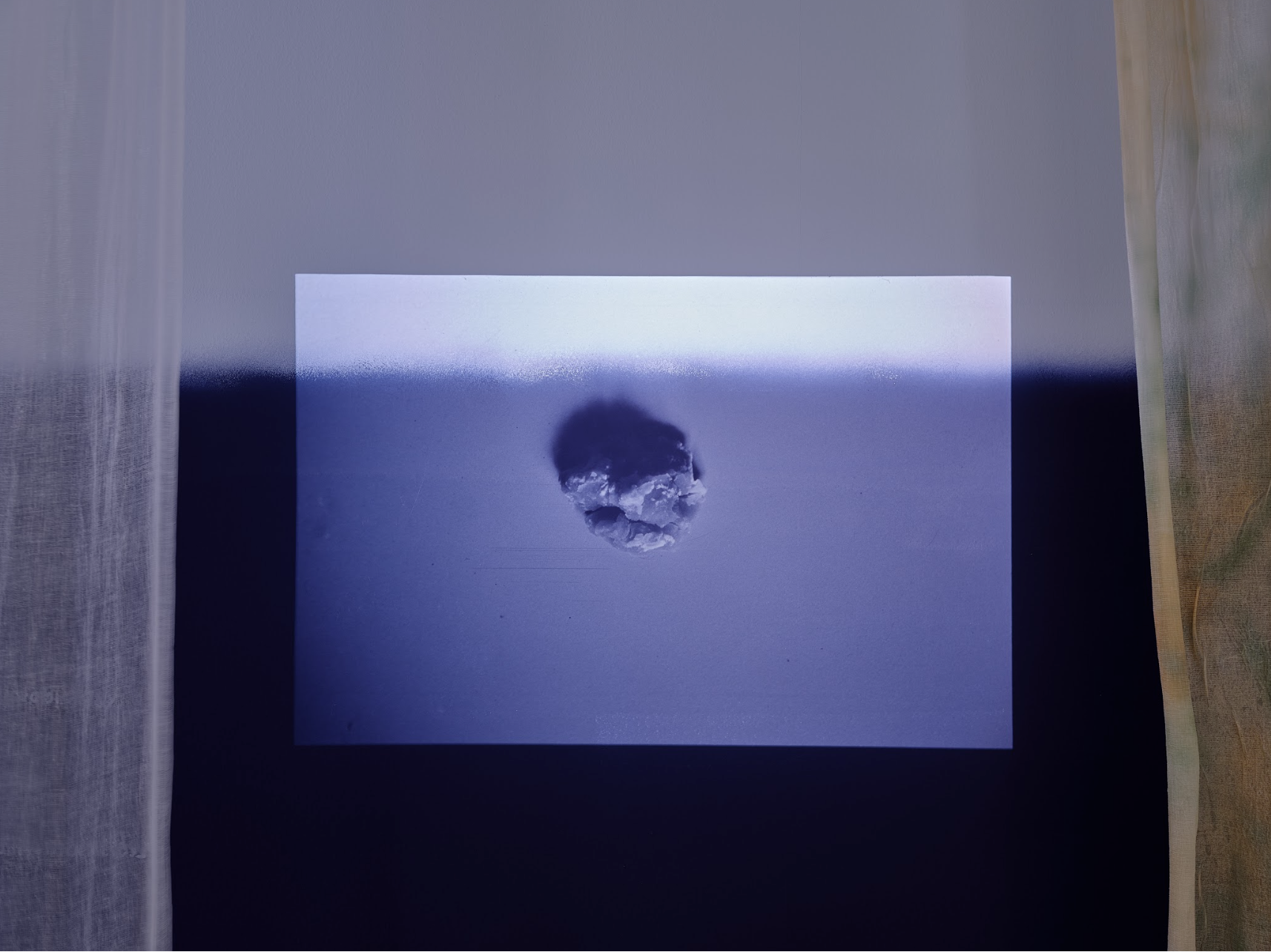라이스 브루잉 시스터즈 클럽, 〈우무혜성〉, 2023
Rice Brewing Sisters Club, Agarcomet, 2023

라이스 브루잉 시스터즈 클럽, 〈우무혜성〉, 2023, 35mm 흑백 슬라이드 필름, 24x36mm(x20)
빛은 대략 수심 200m의 바다까지 도달한다. 전체 바다의 겨우 10%에 해당하는 이곳에서 빛에 의한 생산활동이 일어나 에너지와 영양분이 만들어지며 대부분의 바다생물은 이곳에서 살아가고 있다. 인간의 눈으로 볼 수 없는, 빛이 닿지 않는 심연의 공간과 그곳에서 살아가는 존재에 대해서는 많은 것이 알려져 있지 않다. 또한 1,000-4,000m 깊이의 심해는 극도의 압력을 견디는 미생물과 바다생물만이 살고 있을 뿐 아니라 극히 일부분만이 알려져 있기 때문에 우주 공간과 연결하여 생각해 볼 수 있다.
한국에서는 연간 약 18만 톤의 쓰레기가 바다에 버려진다. 이와 다르지 않게 2023년 현재 지구 주위를 9,600톤이 넘는 ‘우주쓰레기’가 돌고 있다고 한다. (자료출처: 유럽우주국[ESA]) 우주쓰레기의 대부분은 해양쓰레기와 같이 금속과 플라스틱으로 총알보다 빠른 속도로 지구 궤도를 돌며 인공위성과 우주정거장과 충돌하기도 한다. (자문: 이동주 박사)
사진 ⓒ 박수환
Rice Brewing Sisters Club, Agarcomet, 2023, 35mm black & white slide film, 24x36mm(x20)
The depth at which light penetrates the ocean is about 200 meters. It is only in this small section of the ocean – equivalent to about 10% of the ocean’s total volume – that photosynthesis can occur, producing energy and nutrients essential for the survival of living beings. The rest of the deep ocean – called the pelagic zone – is between 1,000 and 4,000 meters deep; inhabited by no one but microorganisms and sea creatures that can withstand extreme pressure, the pelagic zone is frequently compared to outer space.
According to the Ministry of Oceans and Fisheries, about 180,000 tons of trash are dumped into the ocean every year in South Korea alone. Similarly, according to the European Space Agency (ESA), more than 96,000 tons of “space debris” currently circle the Earth. Like marine debris, space debris mostly consists of metal or plastic, orbiting the Earth at speeds faster than a bullet and often colliding with satellites and space stations. (advised by Dongju Lee, Ph.D.)
Photography ⓒ Swan Park